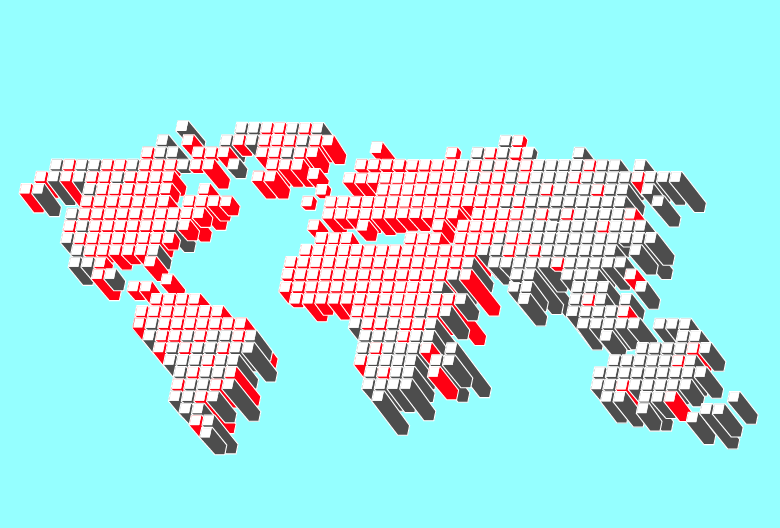or: Know who you’re targeting.
In one of our recent projects, we were asked to do culture research for a client’s website.
The goal was to optimize the client’s landing pages in terms of design (& content) as the page was to be rolled out in different countries with very different cultural backgrounds e.g. USA, China and Russia.
Inhaltsverzeichnis:
What is culture?
According to social psychologist Geert Hofstede, the term ‚culture‘ can be defined as “(..) a shared set of values that influence societal perceptions, attitudes, preferences, and responses”.
In short, culture takes an effect on our perception, cognition and behaviour. When working on websites, interfaces or campaigns this means we need to consider the following things:
- What catches our attention?
- How do we look for information?
- What seems important / not that important?
- What seems trustworthy to us?
- Which things take an effect on our purchase decisions?
Geert Hofstede is famous for their intercultural studies and his theories regarding cultural dimensions.
If we take his theories and apply them to country-specific websites or campaigns, we can use his studies as a guide or starting point to consider while designing landing pages for different countries.
Take a look at a few cultural dimensions Hofstede defined
a) Power Distance Index
Expresses the attitude and acceptance of the culture concerning inequalities among individuals. E.g.: We’re okay with tall hierarchies, and structural orders vs No thanks, we prefer flat hierarchies and more equality among people.
b) Individualism vs Collectivism
The ‚I‘ vs ‚We‘ dimension in terms of the self-image. Do I prefer to focus on ‚myself’, decide for myself or should I care more about others than myself? It is about autonomy and personal freedom vs. cohesive groups and loyalty.
c) Masculinity vs Femininity
Is a society more masculine or feminine-oriented? Masculine societies are more competitive, successful and goal/achievement driven than feminine societies, which value cooperation, modesty, taking care of weaker individuals etc.
d) Uncertainty Avoidance
How do people in a society deal with the uncertainty/ambiguity of possible future risks? Should we just let things happen or do we want to control them? So this one is about:‘ Stick to what we know or should we take risks and be open-minded for new ideas and changes?‘
e) Long Term vs short term Orientation
Hard work (live for the future) vs. quick results (live in the moment)
Why is it important regarding web design?
Since the first rule of design is that we should know who we are targeting and that communication design should not only be a fluffy buffy, wunderhübsch thing but rather based on a strategic decision, we would argue that culture plays a big role in interface design. So it is our job to find out how to address all those different people.
The design and content strategy will have a huge effect on how the information is perceived and which actions are performed.
Consider you are asked to design a landing page which should be rolled out in USA and China.
So you are targeting two very different cultures with very different backgrounds, perceptions, and values.
This should take an effect on the design of the landing page – and with design, we do not mean only the visuals – we could and should adapt this to the content/messages, too.
Example
The dimension of ‚Individualism and Collectivism‘ in two very different countries: the USA (high individualism score) and China (high collectivism score).

The question here is: which kinds of values are important for the individualist culture that is predominant in the USA? Which values target the collectivist culture – like in China.
What kind of messages are probably more attractive to the more individualist cultures like the USA?
- Benefits for the individual customer
- Personal tone (This is the right thing for YOU!)
- Emphasize the needs of the individual (Exactly what YOU need, can you resist?)
- Personal Call to Action (Test it here!)
What kind of messages are more appealing to the more collectivist cultures like China?
- Keep the ‚WE‘ of the group (not ‚me‘) in mind – e.g. ‚Most popular‘ instead of ‚YOU might also like product a, b, c, etc…‘
- Show groups of people instead of individuals
- Emphasize traditional values (symbols, metaphors)
- Bring testimonials and social proof (others like this too, because…)
What you can do / possible ways to adapt content:
Establish separate websites for each country. This approach is expensive and means a lot of workload but you are able to individualize the pages for each cultural society in a very specific way.
If you cannot separate your websites, consider a super flexible container-like system so every country can be filled with different content within pre-defined and designed containers, which can be switched on and off for example.
Keep in mind that the above dimensions are theories, so use them as guidelines and not rules. But when designing something, a landing page, a campaign or a print product keep the target audience/users in mind – especially if they do have social/cultural backgrounds that differ from each other.
Photo credit: Vector world map from vecteezy





